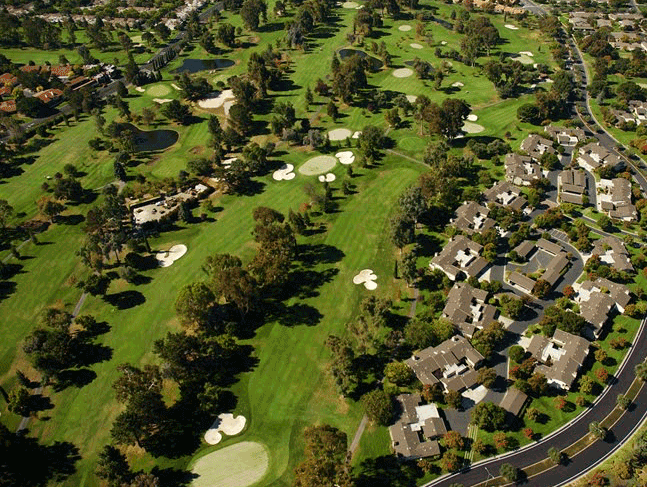
Two men’s clubs I used to belong to have an “age plus handicap” system to allowplayers to move forward a set of tees. (i.e. If over 60 years + handicap = 80 or more, a player may elect to move up). That doesn’t seem exactly right to me.What about a longer hitter with a poor short game (higher handicap) vs. a shorter hitter with an awesome short game (lower handicap)?
It seems to me that the game of golf and most courses are designed to be played with fewer drivers and fairway woods than approach irons, pitches, chips, andputts. Consider a “normal” par 72 course. To play to par, from the “best” tees, you would use the following clubs.
|
Driver |
Fairway |
Approach |
Greenside | ||
|
4 |
Par 3s |
4 |
8 |
||
|
4 |
Par 5s |
4 |
4 |
4 |
8 |
|
10 |
Par 4s |
10 |
10 |
20 |
|
|
Total |
14 |
4 |
18 |
36 |
To shortcut the math, that is 18 “longer clubs” (25%) vs. 54 “shorter clubs” (75%).NOTE: The Villages, with 3 par 3s and 3 par 5s, is the same ratio.
I wondered if there was any data out there that could shed more light on the subject. I did some research and found an article on-line. I will try to summarize it here, with my additional input. To view the complete article, go to:www.milesofgolf.com/which-tees-should-you-play/
The authors of the article looked at data from the PGA and LPGA and charted the distance relationships between drivers and all the other clubs in the bag. For example, a 5w is 82%, a 6 iron is 64%, a 9 iron is 50%, etc. They also considered that an “ideal course” would have holes with varying difficulty. There would be 1 short, 2 medium and 1 long par 3. The same for par 5s and a variety for the par 4s as well.
Their conclusion: A factor of 28. Consider the length of a “well struck drive” and multiply by 28.
|
Driver |
x 28 |
The Villages |
||
|
260 |
7280 |
Tee # |
Yards |
|
|
240 |
6720 |
#5 |
6630 |
|
|
220 |
6160 |
#4 |
6306 |
|
|
200 |
5600 |
#3 |
5701 |
|
|
180 |
5040 |
#2 |
4935 |
|
|
160 |
4480 |
#1 |
4031 |
|
|
140 |
3920 |
|||
Be honest with yourself. I like to think my “well struck drive” is 200 yards, but I know I hit more of them 180 than I do 220. Also, we are all different and averages don’t always apply.
Be good to yourself. Play well and have fun!
As for me, given a choice, I plan to move forward, especially when playing an unfamiliar outside course.
ADDENDUM:
“The Committee” in any competitive event or game will assign tees and/or guidelines for optional tee choices. There are USGA guidelines for assigning course handicaps when playing within a field using different sets of tees.
When not playing in an event against a field, players in a friendly competition, playing from different tees, may always agree upon strokes given among themselves.
In both cases, we must always use the USGA rules for posting. Using a different set of tees will affect your course handicap for the round, and possibly your ESC score used for posting.
A note regarding combo tees: Occasionally, “The Committee” of an event may designate combo tees to be used during that event. There are USGA guidelines for adjusting course handicaps for said rounds. Unless combo tees are officially rated, players must not post scores from routine rounds played from combo tees.
Perhaps there will be future opinion piece(s) further addressing these issues.
Use these links to access and share this blog article:
Short URL: http://ffx.so/8N1M5Long URL: http://www.villagesgolfers.com/blog/1
or
Long URL: http://www.villagesgolfers.com/blog/Which Tees Should I Choose Today?
(Right click and Copy Link)




